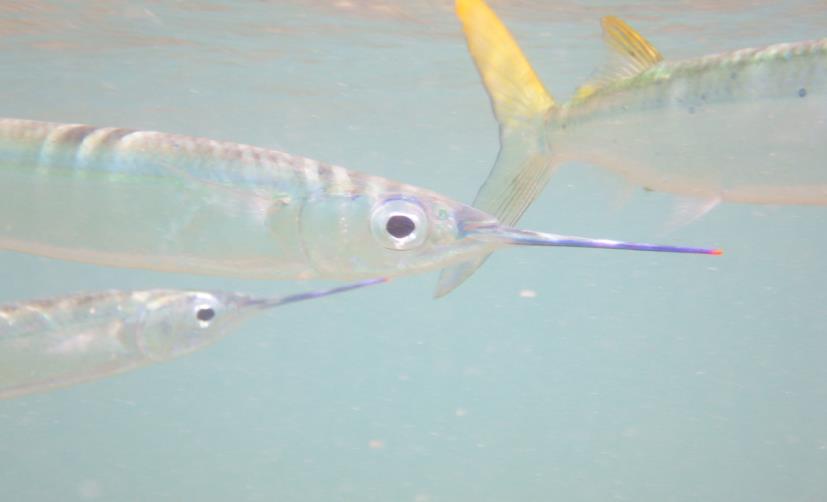



Hemiramphus brasiliensis
| Ecological Descriptors |
||||
| Habitat | Size (cm) | Diet | Behaviour | Sex |
| EPel | 40 | Pla, Veg, Pisc | Sh | F |
Description:
Arrow-shaped body. No teeth, with the lower jaw extended into a long beak, whilst the upper jaw is short and triangular. Bluish on back, silvery on side of head and bod, and white ventrally. The long beak has a fleshy red tip. The entire top lobe of tail fin is yellowish-orange and the lower lobe dusky.
Ecology
This surface dwelling species (maximum depth 5m) is often found inshore of reef habitats and forms large schools. It feeds mainly on seagrasses, smaller fish, planktonic decapods, copepods and siphonophores. Does not make extensive migrations but they move seasonally.
Life Cycle:
It can live up to four years and reaches maturity in the first year, ~ 20 cm. Spawning occurs in waters less than 10 m deep and spawning is greatest during March-July.
Arrow-shaped body. No teeth, with the lower jaw extended into a long beak, whilst the upper jaw is short and triangular. Bluish on back, silvery on side of head and bod, and white ventrally. The long beak has a fleshy red tip. The entire top lobe of tail fin is yellowish-orange and the lower lobe dusky.
Ecology
This surface dwelling species (maximum depth 5m) is often found inshore of reef habitats and forms large schools. It feeds mainly on seagrasses, smaller fish, planktonic decapods, copepods and siphonophores. Does not make extensive migrations but they move seasonally.
Life Cycle:
It can live up to four years and reaches maturity in the first year, ~ 20 cm. Spawning occurs in waters less than 10 m deep and spawning is greatest during March-July.
Ballyhoo

Ballyhoo
(C) Kevin Hadley




44


Ballyhoo
545

